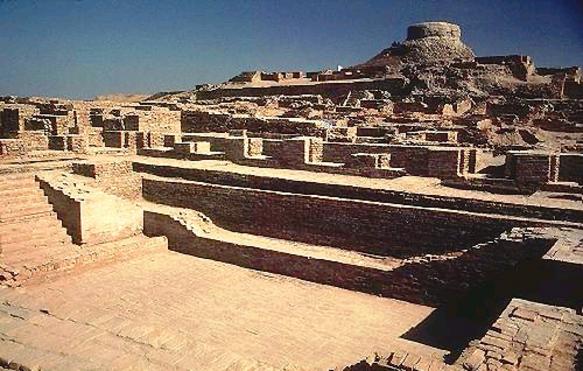
While the Egyptian and Mesopotamian civilizations are well known, did you know that one of the largest in early history was the Indus Valley (or the Harappan) Civilization in present-day Pakistan?
This civilization developed about 5,200 years ago and extended over more than 386,000 square miles across the plains of the Indus River from the Arabian Sea to the River Ganges. At its peak, it accounted for around 10% of the world's population at the time. However, around 1800 B.C, the Indus Valley Civilization began to show signs of falling down a slow path of decline and deterioration.
Curious, isn’t it that a civilization that was thriving and doing so well could all of a sudden start to fall apart at the seams like that. Historians thought so too. We now have clues as to what may have led to its downfall.
Was it an invading tribe?

Ever since the 1920s, which is when the remains of the Harappan culture were first found, research was ongoing as to the reason why this collapse took place.
Many theories have been circulated, such as the one which proclaims that an Indo-European tribe from Central Asia called the Aryans invaded the Harappan land and so caused this decline. However, most of these have been proven null and void -- scholars and scientists have shown that the skeletons of the Aryans belonged to a period after the fall of the civilization.
Well, then, what was it that was the undoing of this age-old culture? We know that the people of the Indus Valley Civilization lived near rivers, and often on river banks as well, as this suited their needs well.
However, based upon the May 2012 investigations by a research team led by geologist Liviu Giosan of the Woods Hole Oceanographic Institution, it has been concluded that it was these very rivers that brought down the mighty civilization.
At the mercy of the "Rain Gods"
You see, the slow eastward migration of the monsoons across Asia was what initially allowed the civilization to develop. The farming that was a direct result of this abundant rain supply, and the surplus crops that resulted, supported the development of cities. The Harappan people did not indulge in irrigation, instead choosing to rely solely on the rains to meet the needs of their crops.
However, since the monsoons kept moving eastward, soon the Indus Valley Civilization was not receiving enough water. Its people then followed the monsoons and migrated towards the Ganges Basin (in present-day India) in the east, where they set up smaller villages and farms. Due to the small nature of these set-ups, not enough surplus crops were produced in order to establish trade with other civilizations, such as those of Mesopotamia and Ancient Egypt.
As a result, the cities, and thus a great civilization died out -- all because of a sudden climate change. Is there a lesson for us here?






